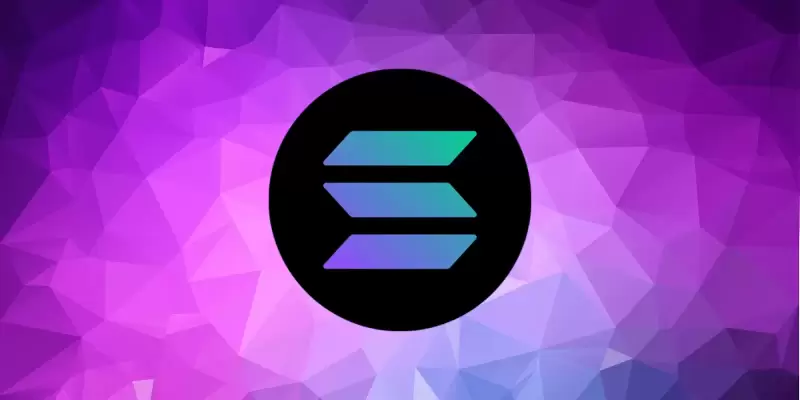 |
|
 |
|
 |
|
 |
|
 |
|
 |
|
 |
|
 |
|
 |
|
 |
|
 |
|
 |
|
 |
|
 |
|
 |
|
人工知能(AI)のコンテキストでは、特に自然言語処理(NLP)モデルGPTなどの大手言語モデル(LLM)で使用されるモデルのようなモデル

The term "Token" in the context of Artificial Intelligence (AI) and Natural Language Processing (NLP) refers to the atomic units of text that are processed by AI models, especially those used in large language models (LLMs) such as GPT. These tokens can represent words, subwords, characters, or punctuation marks, depending on the AI model's design and the tokenization method used.
人工知能(AI)および自然言語処理(NLP)のコンテキストでの「トークン」という用語は、AIモデル、特にGPTなどの大規模な言語モデル(LLM)で使用されるテキストの原子単位を指します。これらのトークンは、AIモデルの設計と使用されるトークン化方法に応じて、単語、サブワード、文字、または句読点を表すことができます。
The process of tokenization is crucial in AI, as it breaks down text into smaller parts, making it easier for models to understand and process. Each of these tokens represents a unit that the AI model processes and uses to understand, predict, and generate language.
AIでは、トークン化のプロセスが重要であり、テキストをより小さな部分に分解し、モデルが理解して処理しやすくなります。これらの各トークンは、AIモデルが言語を理解、予測、生成するために処理および使用するユニットを表します。
Examples of Tokens in AI:
AIのトークンの例:
Word-level Tokens: Many models treat each word as a separate token. In a sentence like "AI is transforming industries," each word—'AI,' 'is,' 'transforming,' 'industries’—would be treated as a token.
単語レベルのトークン:多くのモデルは、各単語を別のトークンとして扱います。 「AIは産業を変革している」のような文では、それぞれの単語 - 「 ''、 ''、 '' Transforming、 ''産業」はトークンとして扱われるでしょう。
Subword Tokens: Some models use subwords to handle rare or unknown words more effectively. For instance, the word “unbelievable” might be tokenized as “un,” “believe,” and “able.” This method allows the AI model to generalize better to new or unseen words.
サブワードトークン:一部のモデルでは、サブワードを使用して、まれな単語または未知の単語をより効果的に処理します。たとえば、「信じられない」という言葉は、「国連」、「信じる」、「可能」としてトークン化される可能性があります。この方法により、AIモデルは新しい単語や目に見えない単語に合わせてより良く一般化できます。
Character Tokens: In some cases, every character is treated as a token. This is useful in applications where the exact spelling of words matters, or in models that need to handle many different languages or special symbols.
キャラクタートークン:場合によっては、すべてのキャラクターがトークンとして扱われます。これは、単語の正確なスペルが重要なアプリケーション、または多くの異なる言語や特別なシンボルを処理する必要があるモデルで役立ちます。
Punctuation and Special Tokens: Tokens also include punctuation marks like commas, periods, and question marks. Additionally, there are special tokens used for specific purposes in models, such as
句読点と特別なトークン:トークンには、コンマ、ピリオド、疑問符などの句読点も含まれます。さらに、「文の開始」や「文の終わり」など、モデルの特定の目的に使用される特別なトークンがあります。
Benefits of Tokens in AI:
AIのトークンの利点:
Efficient Text Processing: Tokens help break down complex sentences into smaller, more manageable parts. This enables AI models to handle language processing tasks with more precision and efficiency.
効率的なテキスト処理:トークンは、複雑な文章をより小さく、より管理しやすい部分に分解するのに役立ちます。これにより、AIモデルは、より正確で効率的に言語処理タスクを処理できます。
Handling Rare Words: By using subword tokenization, AI models can generalize better and deal with rare or complex words that the model hasn’t seen during training. For example, the word "unfathomable" can be broken into smaller, recognizable subwords, allowing the model to interpret it correctly.
まれな単語の処理:サブワードトークン化を使用することにより、AIモデルはより良い一般化を行い、トレーニング中にモデルが見たことのないまれまたは複雑な単語に対処できます。たとえば、「計り知れない」という言葉は、より小さく、認識可能なサブワードに分割され、モデルが正しく解釈できるようにします。
Improved Model Performance: Tokenization allows models to focus on the relationships between small units of language, improving their understanding of syntax and semantics. This leads to better results in tasks like translation, summarization, or text generation.
改善されたモデルパフォーマンス:トークン化により、モデルは言語の小さな単位間の関係に焦点を合わせ、構文とセマンティクスの理解を向上させることができます。これにより、翻訳、要約、テキスト生成などのタスクが改善されます。
Language Agnostic: Since tokenization can happen at the character or subword level, it can be applied to many different languages without needing a separate model for each language. This makes AI models more versatile and widely applicable across different linguistic contexts.
言語不可知論者:キャラクターまたはサブワードレベルでトークン化が発生する可能性があるため、各言語に個別のモデルを必要とせずに多くの異なる言語に適用できます。これにより、AIモデルはより汎用性が高く、異なる言語コンテキストにわたって広く適用可能になります。
Simplifies Model Training: Working with tokens makes it easier for AI models to be trained on large datasets. Instead of processing entire paragraphs or sentences at once, AI models deal with smaller chunks, which speeds up the training process and reduces computational complexity.
モデルトレーニングを簡素化する:トークンを使用すると、AIモデルが大規模なデータセットでトレーニングを容易にすることができます。段落または文章全体を一度に処理する代わりに、AIモデルはより小さなチャンクを扱い、トレーニングプロセスを高速化し、計算の複雑さを減らします。
Limitations of Tokens in AI:
AIのトークンの制限:
Context Loss: Tokenization can sometimes lead to the loss of contextual information. When breaking down a sentence into tokens, some of the nuanced meanings or relationships between words may be lost, especially in word-level or character-level tokenization.
コンテキスト損失:トークン化は、コンテキスト情報の損失につながる場合があります。文をトークンに分解すると、特に単語レベルまたはキャラクターレベルのトークン化では、単語間の微妙な意味や関係が失われる可能性があります。
Ambiguity: Words or phrases with multiple meanings may not always be interpreted correctly, especially if the tokenization method doesn’t capture the full context. For example, the word “bank” could refer to a financial institution or the side of a river, and without sufficient context, the AI may misinterpret its meaning.
あいまいさ:複数の意味を持つ単語やフレーズは、特にトークン化方法が完全なコンテキストをキャプチャしない場合、常に正しく解釈されるとは限りません。たとえば、「銀行」という言葉は、金融機関または川の側面を指す可能性があり、十分な文脈がなければ、AIはその意味を誤って解釈する可能性があります。
Token Limit: Most AI models have a limit on the number of tokens they can process at once. This can be problematic for long documents or conversations.
トークン制限:ほとんどのAIモデルには、一度に処理できるトークンの数に制限があります。これは、長い文書や会話で問題がある場合があります。
Inefficiency with Rare Languages: For languages that use complex characters or symbols, character-level tokenization can lead to an explosion in the number of tokens, increasing computational costs and reducing efficiency.
まれな言語での非効率性:複雑な文字またはシンボルを使用する言語の場合、文字レベルのトークン化は、トークンの数の爆発につながり、計算コストの増加、効率を低下させる可能性があります。
Complexity in Preprocessing: Tokenizing text for AI models often requires complex preprocessing, which can introduce errors or inconsistencies if not done correctly. This can affect the brightness and accuracy of the model’s outputs.
前処理の複雑さ:AIモデルのテキストをトークン化するには、多くの場合、複雑な前処理が必要であり、正しく行われないとエラーや矛盾を導入できます。これは、モデルの出力の明るさと精度に影響を与える可能性があります。
Summary of Tokens:
トークンの概要:
In summary, tokens are the fundamental units of text that AI models, particularly in the field of natural language processing, use to understand and generate language.
要約すると、トークンは、特に自然言語処理の分野でAIモデルがモデル化する基本的なテキスト単位であり、言語を理解して生成するために使用します。
These tokens can represent words, subwords, characters, or symbols, depending on how the text is broken down for analysis.
これらのトークンは、分析のためにテキストの分解方法に応じて、単語、サブワード、文字、または記号を表すことができます。
Tokenization offers numerous benefits, such as improving AI model efficiency, allowing better handling of rare or unknown words, and facilitating multilingual applications.
トークン化は、AIモデルの効率の改善、希少または未知の単語のより良い取り扱い、多言語アプリケーションの促進など、多くの利点を提供します。
However, it also has limitations, such as the potential for context loss, token limit constraints, and increased complexity in preprocessing.
ただし、コンテキスト損失、トークン制限制約、前処理の複雑さの増加など、制限もあります。
免責事項:info@kdj.com
提供される情報は取引に関するアドバイスではありません。 kdj.com は、この記事で提供される情報に基づいて行われた投資に対して一切の責任を負いません。暗号通貨は変動性が高いため、十分な調査を行った上で慎重に投資することを強くお勧めします。
このウェブサイトで使用されているコンテンツが著作権を侵害していると思われる場合は、直ちに当社 (info@kdj.com) までご連絡ください。速やかに削除させていただきます。



























































